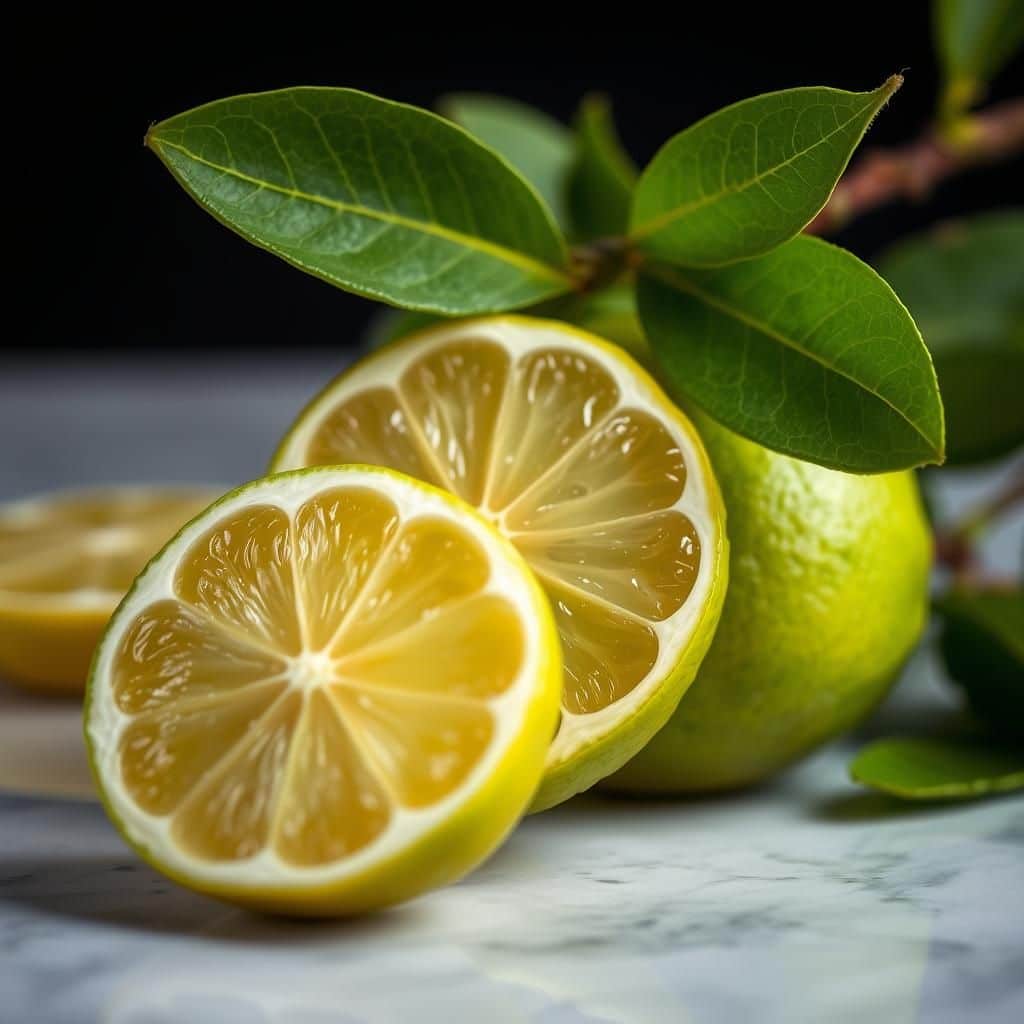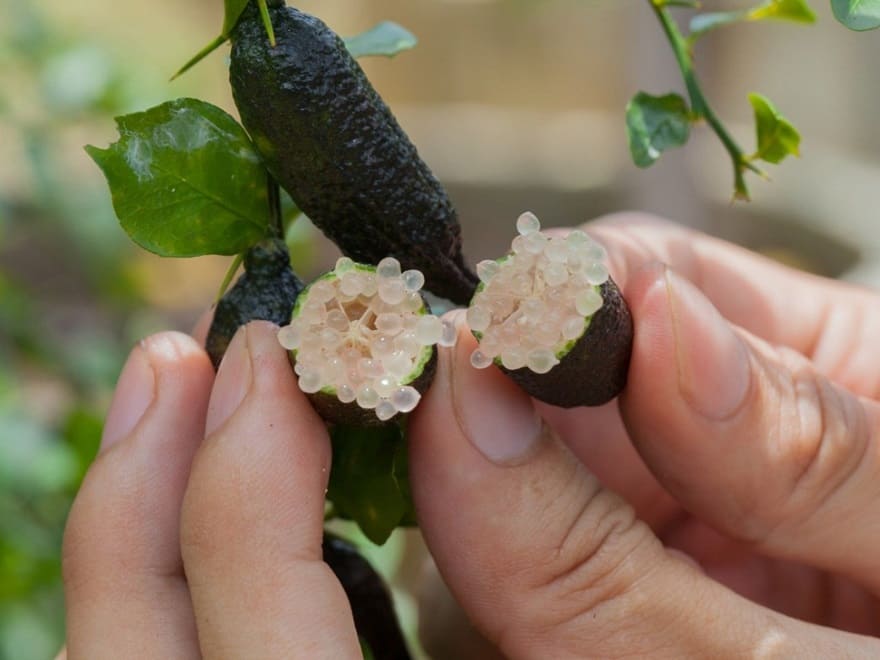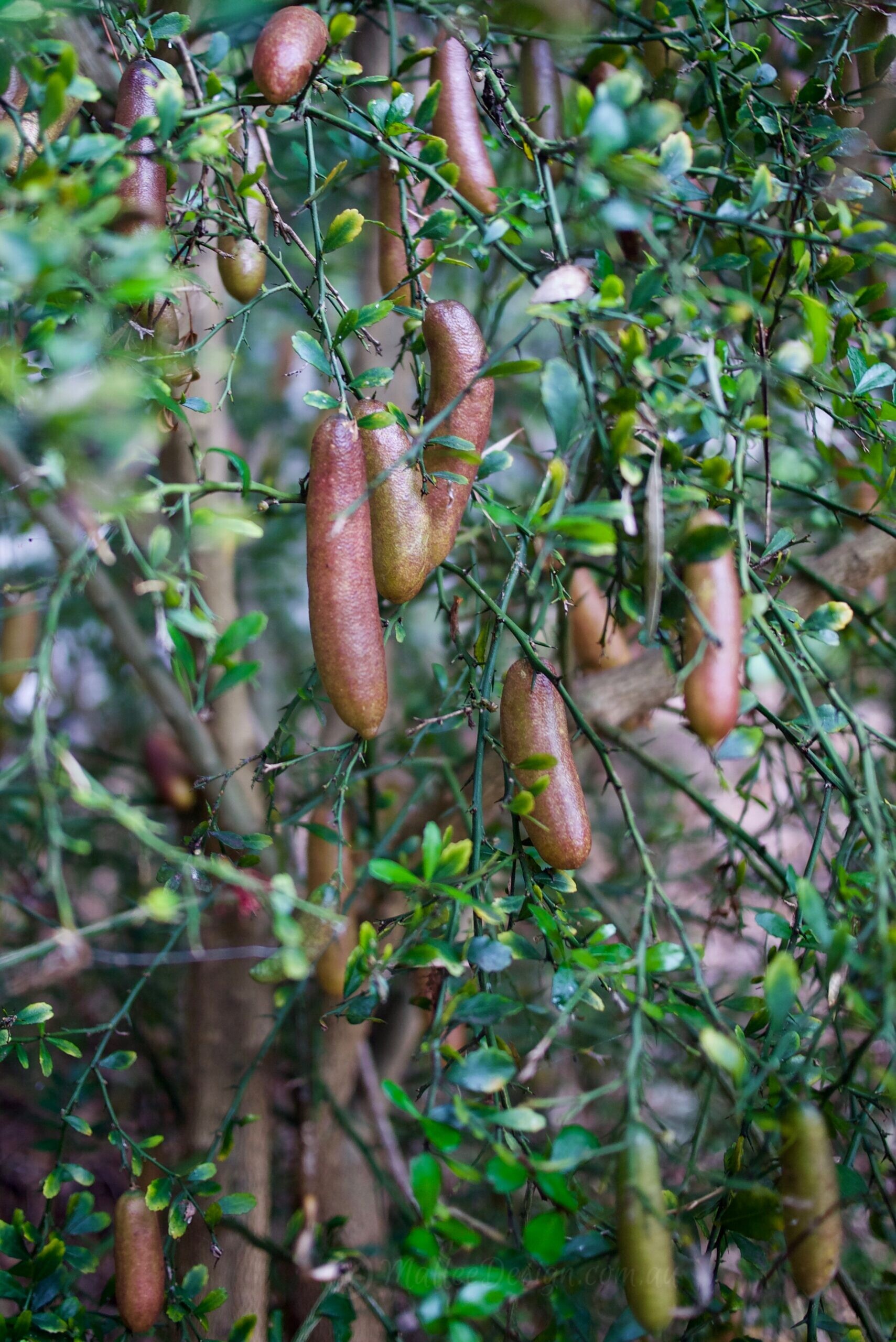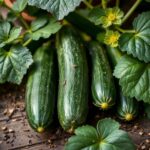Discover the Unique Benefits and Uses of Finger Lime Citrus Australasica: The Australian Superfruit

Finger lime, known scientifically as Citrus australasica, is rapidly gaining recognition as one of Australia's most intriguing superfruits. With its unique elongated shape and vibrant, caviar-like pearls packed with zesty flavor, this citrus gem offers not only a delightful culinary experience but also a range of health benefits. Rich in antioxidants and vitamin C, finger limes are not only a feast for the taste buds but also a powerful ally in promoting overall wellness. In this article, we will explore the distinctive characteristics, uses, and advantages of incorporating finger lime into your diet and lifestyle, revealing why this fruit deserves a spot in your pantry.
Exploring the Unique Qualities of Finger Lime (Citrus australasica)
Finger lime, scientifically known as Citrus australasica, is a remarkable fruit native to the subtropical rainforests of Australia. Its elongated, caviar-like pearls are not only visually stunning but also offer a burst of tangy flavor that has made it increasingly popular in gourmet cuisine and mixology. Often referred to as citrus caviar, the finger lime's unique texture adds an exciting twist to dishes and cocktails, while its high antioxidant content provides numerous health benefits. Cultivated primarily in the coastal regions of Australia, this fruit thrives in well-drained soils and subtropical climates, making it a valuable commodity for local farmers and a sought-after ingredient for chefs around the world.
Nutritional Benefits
Finger lime is packed with essential nutrients, making it a healthy addition to any diet. It is rich in vitamin C, which plays a crucial role in boosting the immune system and promoting healthy skin. Additionally, it contains antioxidants that help combat oxidative stress and reduce inflammation. The fruit's low-calorie count combined with its high fiber content aids in digestion and can contribute to weight management, making it a nutritious choice for health-conscious individuals.
Culinary Uses
The unique flavor profile of finger lime makes it incredibly versatile in the kitchen. Chefs and home cooks alike can use the citrus pearls to enhance a variety of dishes, from seafood and salads to desserts and cocktails. The juice and zest can also be incorporated into dressings and marinades, providing an unexpected citrusy kick. Its aesthetic appeal and flavor can elevate simple dishes into gourmet presentations, highlighting the growing trend of using innovative ingredients in culinary arts.
Growth and Cultivation
Finger lime trees thrive in warm, tropical to subtropical climates, requiring well-drained soil and plenty of sunlight to grow healthily. They are typically propagated from cuttings or grafts rather than seeds, allowing for consistent quality and flavor in the fruit. Regular pruning and proper watering are essential for optimal growth, as these trees can be susceptible to pests and diseases if not cared for adequately. Cultivators are increasingly recognizing the commercial potential of finger limes, leading to its rise in popularity within orchards across Australia.
Environmental Impact
The cultivation of finger lime has minimal environmental impact compared to other citrus fruits, partly due to its growth in sustainable agricultural practices. Often grown in small-scale farms, finger lime can support biodiversity and promote healthy ecosystems. However, it is crucial for growers to implement responsible farming techniques to maintain soil health and prevent the use of harmful pesticides. By focusing on sustainability, finger lime cultivation can contribute positively to local communities and preserve natural resources for future generations.
Market Demand
The market demand for finger lime has surged in recent years, fueled by its rising popularity in elite restaurants and gourmet cooking. As consumers become more adventurous in their culinary choices, the fruit's exotic nature and unique taste make it a sought-after ingredient in various culinary applications. Farmers are capitalizing on this trend by expanding their production and marketing efforts. The increasing interest in organic and locally-sourced ingredients further boosts the appeal of finger lime, positioning it as a premium product in the global market.
| Aspect | Details |
|---|---|
| Nutritional Value | Rich in vitamin C, antioxidants, and fiber |
| Culinary Applications | Used in seafood, salads, desserts, and cocktails |
| Growth Conditions | Requires warm climate, well-drained soil, and sunlight |
| Environmental Considerations | Supports biodiversity with sustainable practices |
| Market Trends | High demand in gourmet cuisine and local markets |
How big does an Australian finger lime tree get?

The Australian finger lime tree (Citrus australasica) is a small evergreen tree that typically reaches a height of about 1 to 3 meters (3 to 10 feet). However, under optimal growing conditions, some trees can grow taller, reaching up to 6 meters (20 feet). They are known for their unique elongated fruits, which resemble fingers, hence the name finger lime. This tree is well-suited for subtropical and tropical climates and is often grown in home gardens as well as commercial orchards. Below are some detailed sections concerning the size and characteristics of the Australian finger lime tree.
1. Growth Habit and Structure
The growth habit of the Australian finger lime tree is compact and bushy, making it an attractive addition to gardens. The tree typically exhibits the following characteristics:
- Branching: It has a multi-branched structure that contributes to its bushy appearance.
- Leaves: The leaves are glossy and dark green, adding aesthetic value throughout the year.
- Flowers: White to pink flowers bloom from spring to summer, providing a source of nectar for pollinators.
2. Ideal Growing Conditions
To achieve the best size and health for an Australian finger lime tree, specific growing conditions must be met. These include:
- Climate: Ideally, these trees thrive in subtropical to tropical climates with warm temperatures.
- Soil: Well-draining, sandy loam soils are preferred to prevent root rot.
- Sunlight: Full sun exposure is crucial for optimal growth and fruit production.
3. Pruning and Maintenance
Regular pruning and maintenance are essential to ensure the healthy growth of an Australian finger lime tree. Key practices include:
- Pruning: Light pruning can help to shape the tree and encourage air circulation.
- Watering: Water the tree regularly, especially in dry periods, while ensuring that water does not pool around the roots.
- Fertilization: Use a balanced citrus fertilizer to promote healthy growth and fruiting.
4. Fruit Characteristics and Size
The fruits of the Australian finger lime are not only unique in appearance but also carry distinctive flavors. They feature:
See also:
- Shape: The elongated fruits can grow up to 10 centimeters (about 4 inches) in length.
- Color: The fruit can vary in color, ranging from green to yellow, pink, and purple.
- Pulp: The caviar-like pulp is juicy and tangy, often used in culinary dishes for its burst of flavor.
5. Common Pests and Diseases
Like any tree, the Australian finger lime is susceptible to various pests and diseases. Common concerns include:
- Scale Insects: These can sap the strength of the tree and may require treatment with insecticidal soap.
- Rust Diseases: Fungal infections can occur if humidity levels are high; proper air circulation is essential.
- Leaf Miners: The larvae can cause leaf damage, necessitating monitoring and control measures.
Can you grow finger limes in the US?

Yes, you can grow finger limes in the US, primarily in regions that have a suitable climate for their cultivation. Finger limes, also known as Citrus australasica, are native to Australia and thrive in subtropical to tropical climates. They have been gaining popularity in recent years due to their unique appearance and culinary uses. Here’s a detailed look at growing finger limes in the US.
Assessing Climate for Finger Lime Growth
Growing finger limes requires specific climate conditions to thrive successfully. They prefer warm, subtropical to tropical environments, similar to their native Australian habitat.
- Temperature: Finger limes grow best in temperatures ranging from 60°F to 85°F (15°C to 29°C).
- Frost Sensitivity: They are sensitive to frost and can be severely damaged or killed by temperatures below 28°F (-2°C).
- Humidity: A humid climate helps in the fruits' development, although they can tolerate periods of dry weather.
Optimal Locations for Cultivation
In the US, there are specific regions where finger limes are more likely to succeed.
- Hardiness Zones: They grow well in USDA hardiness zones 9 to 11.
- California and Florida: These states, especially in coastal areas, have the suitable climate conditions for cultivating finger limes.
- Greenhouse Cultivation: In areas with cooler climates, using a greenhouse can create the required environment for finger limes.
Soil Requirements for Finger Limes
The soil condition is crucial for the healthy growth of finger limes. They prefer well-draining, slightly acidic soil.
- Soil pH: The ideal pH range is between 5.5 and 6.5.
- Drainage: Good drainage is essential to prevent root rot, so sandy or loamy soils are advisable.
- Nutrient-Rich: Adding organic matter can improve soil fertility and drainage.
Watering and Care Practices
Proper watering is vital for finger lime trees to develop strong roots and produce fruit effectively.
- Watering Schedule: Water regularly, maintaining moist but not soggy conditions.
- Mulching: Using mulch helps retain moisture and regulate soil temperature.
- Fertilization: Apply a balanced fertilizer during the growing season to promote healthy growth and yield.
Pest and Disease Management
Like other citrus plants, finger limes can be susceptible to various pests and diseases.
- Common Pests: Watch out for aphids, spider mites, and scale insects, which can affect the trees.
- Disease Prevention: Regularly inspect trees for signs of disease; diseases like root rot and citrus greening can be detrimental.
- Organic Treatments: Consider using organic pesticide options and maintaining good cultural practices to manage infestations.
Where is the best place to plant a finger lime tree?

To determine the best place to plant a finger lime tree (Citrus australasica), it is essential to consider various factors that contribute to the health and productivity of the tree. Finger lime trees thrive in warm environments with specific sunlight, soil, and water requirements.
Optimal Sunlight Exposure
Finger lime trees require a location that receives full sun for at least 6-8 hours daily. This exposure helps in:
- Photosynthesis: Maximizes the tree's ability to produce energy.
- Fruit Quality: Ensures better flavor and higher yields of the limes.
- Growth Rate: Stimulates healthy and vigorous growth throughout the growing season.
Soil Conditions
The ideal soil for planting finger limes is well-draining and slightly acidic to neutral, ideally with a pH of 5.5 to 6.5. Consider the following aspects:
- Drainage: Prevents root rot by ensuring excess water flows away quickly.
- Nutrients: Rich in organic matter that supports healthy growth.
- pH Levels: Maintains the right acidity, promoting nutrient availability.
Climate Considerations
Finger lime trees flourish in warm, subtropical to tropical climates. Key climate factors include:
See also:
- Temperature: Preferring temperatures between 60°F to 85°F (15°C to 29°C).
- Frost Protection: Sensitive to frost; choose locations that offer some protection from cold snaps.
- Humidity: Prefer areas with moderate humidity levels that facilitate healthy growth.
Protection from Wind and Pests
Selecting a site that provides protection from harsh winds and common pests is crucial. Consider:
- Windbreaks: Planting near structures or other trees to shield from strong winds.
- Shade: Using trees to provide partial shade during the hottest months can reduce stress.
- Pest Control: Monitoring and managing pest populations to protect the tree's health.
Watering Needs
Adequate watering is vital for the establishment of finger lime trees. Here’s what to keep in mind:
- Soil Moisture: Keeping the soil consistently moist but not soggy is key.
- Frequency: Watering deeply once per week, especially during dry spells, is recommended.
- Mulching: Using organic mulch helps retain moisture and regulate soil temperature.
Do finger lime trees like sun or shade?

Finger lime trees, also known as Citrus australasica, thrive in environments that offer a balance of sunlight and shade. These trees prefer full sun but can tolerate partial shade, making them somewhat adaptable to varying conditions. When grown in adequate sunlight, finger lime trees produce more fruit and develop healthier foliage. However, excessive heat or direct sunlight in extremely hot climates can lead to stress, so it’s crucial to monitor the conditions and provide some shade when necessary.
Ideal Sun Exposure for Finger Lime Trees
Finger lime trees are best suited to environments that provide full sun during most of the day. Ideally, they should receive about 6 to 8 hours of direct sunlight. This duration helps maximize fruit production and overall growth. To further understand their sun requirements, consider the following:
- Morning sun is beneficial, as it warms the tree and helps dry dew, reducing the risk of fungal diseases.
- Afternoon shade can be provided in particularly hot regions to prevent sunburn on the leaves.
- In colder climates, ensure the tree faces the sun as much as possible to protect from frost.
Effects of Too Much Sunlight
While finger lime trees enjoy sunlight, excessive exposure can lead to negative effects. Overexposure to sunlight can cause leaf scorch or sunburn, particularly in young or newly planted trees. It is important to recognize:
- Leaf discoloration may occur, turning leaves yellow or brown at the edges.
- Stunted growth can happen due to stress caused by extreme heat.
- Reduced fruit yield might be a result of the tree conserving energy to protect itself from damage.
Importance of Shade in Hot Climates
In regions where temperatures soar, providing partial shade for finger lime trees can be beneficial. It protects the tree and enhances its productivity. Consider these points:
- Filter sunlight with shade cloth or nearby plants to soften direct exposure.
- Protect young trees until established, as they are more vulnerable to heat stress.
- Monitor moisture levels, as shade can affect the evaporation rate in the soil.
Growing Finger Lime Trees Indoors
For those growing finger lime trees indoors, understanding their light requirements is crucial. Indoor trees benefit from bright, indirect sunlight. Recommendations include:
- Use grow lights if natural light is insufficient to ensure proper growth.
- Place trees near windows that receive morning sunlight but not intense afternoon rays.
- Rotate the tree periodically to ensure even sun exposure and growth.
Seasonal Considerations for Sunlight
The amount and intensity of sunlight can vary with the seasons, impacting finger lime trees differently throughout the year. Considerations include:
- In spring and summer, ensure trees get ample sunlight to stimulate growth and flowering.
- In fall, monitor the tree's exposure as days shorten; further shade may be needed.
- During winter, protect trees from cold spells and ensure they still receive some sunlight.
Questions from Our Readers
What is finger lime (citrus australasica)?
Finger lime, or citrus australasica, is a unique type of citrus fruit native to Australia, known for its elongated shape resembling a finger. This fruit contains small, caviar-like vesicles filled with tangy juice, making it a popular choice in culinary dishes and cocktails due to its bursting flavor and visual appeal.
How do you use finger limes in cooking?
Finger limes are versatile in the kitchen and can be used in various ways, such as a garnish for seafood, salads, or desserts. Their vibrant flavor and textural elements add a unique twist, and they can be sprinkled over dishes to enhance flavor or incorporated into sauces and dressings for added zest.
Are finger limes easy to grow at home?
Growing finger limes at home can be a rewarding experience, as they thrive in warm climates with well-drained soil. Although they require some care and attention, such as regular watering and appropriate pruning, they can be grown in pots or gardens and are well-suited for home gardening enthusiasts.
What are the health benefits of finger limes?
Finger limes are not only delicious but also packed with nutrients, including vitamins C and E, dietary fiber, and antioxidants. Consuming these fruits can support immune health, promote digestive wellness, and provide anti-inflammatory properties, making them a beneficial addition to a balanced diet.
See also:

If you want to read more articles like Discover the Unique Benefits and Uses of Finger Lime Citrus Australasica: The Australian Superfruit, we recommend you check out our Seeds category.
Leave a Reply
Related Articles